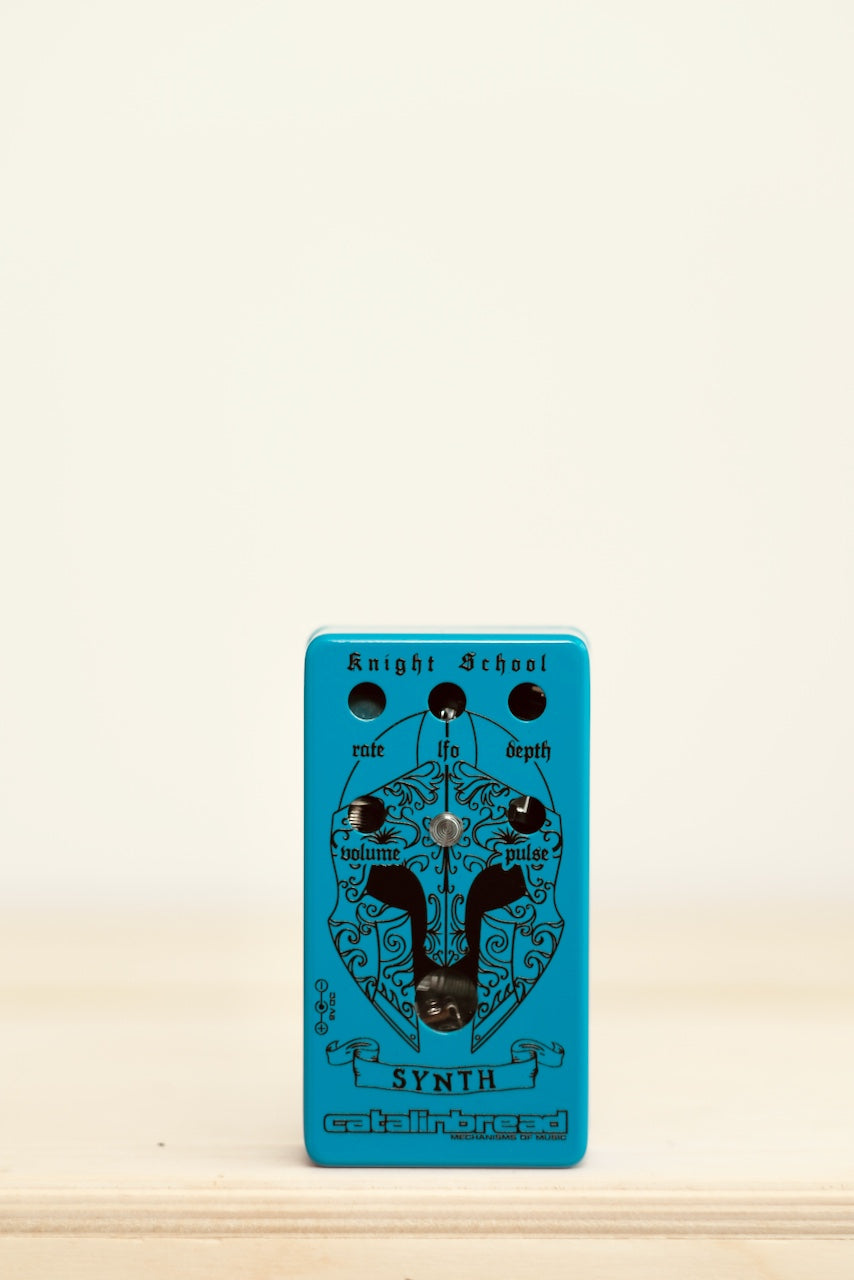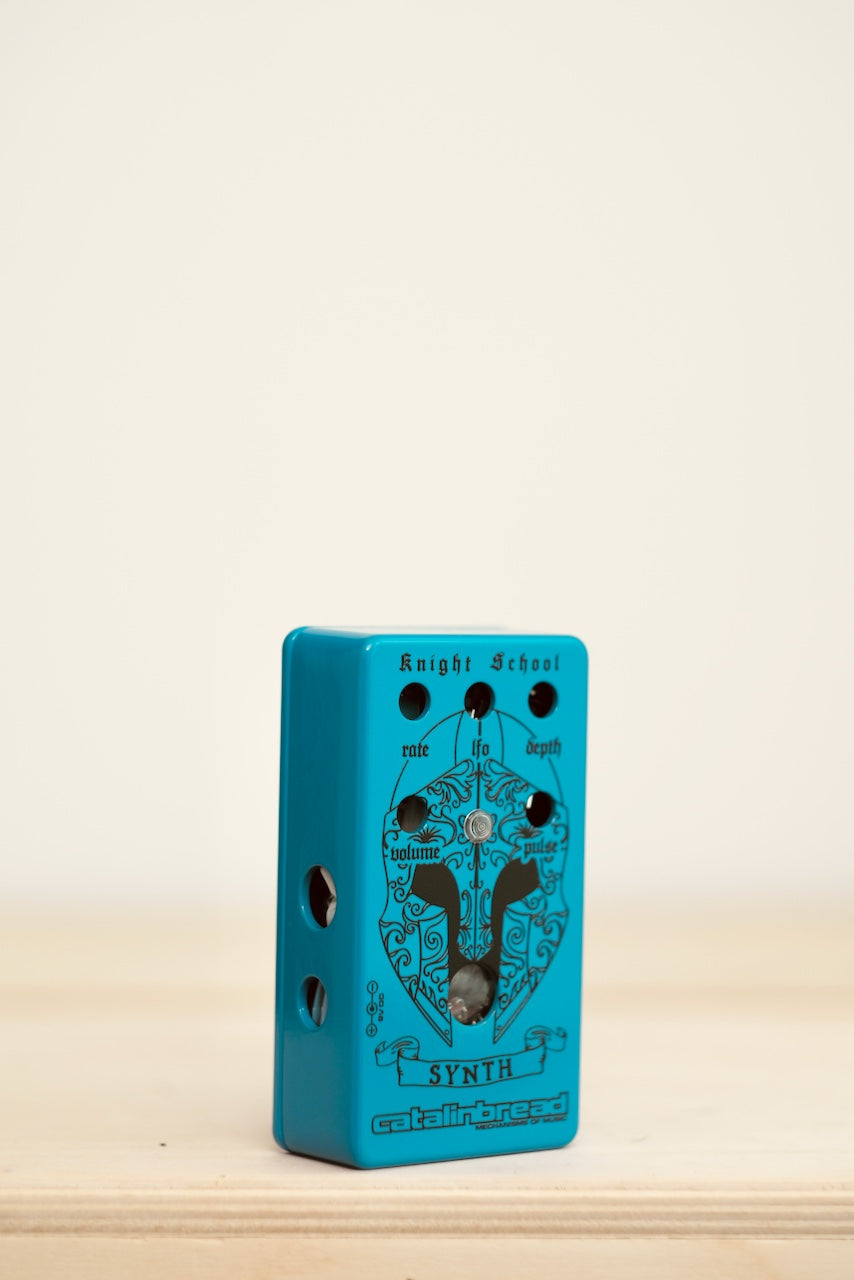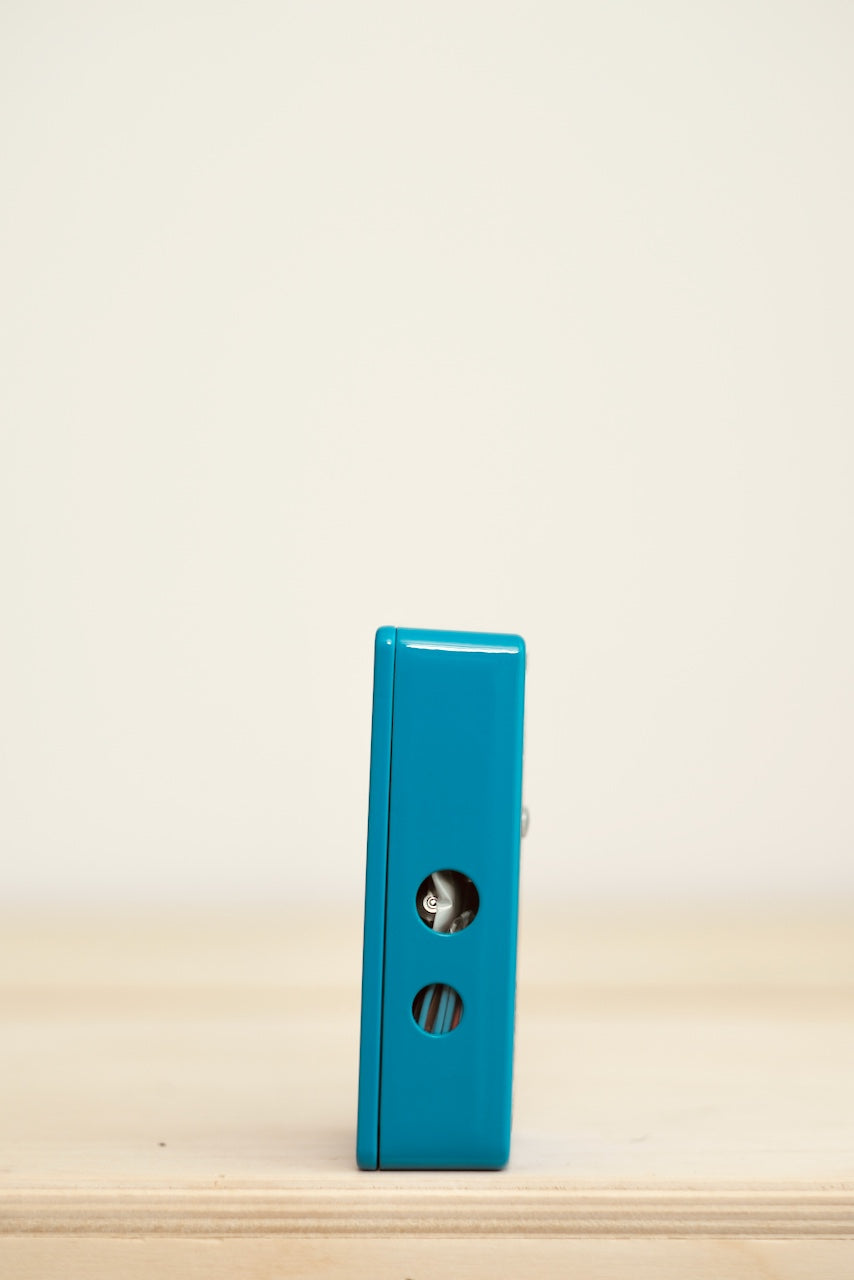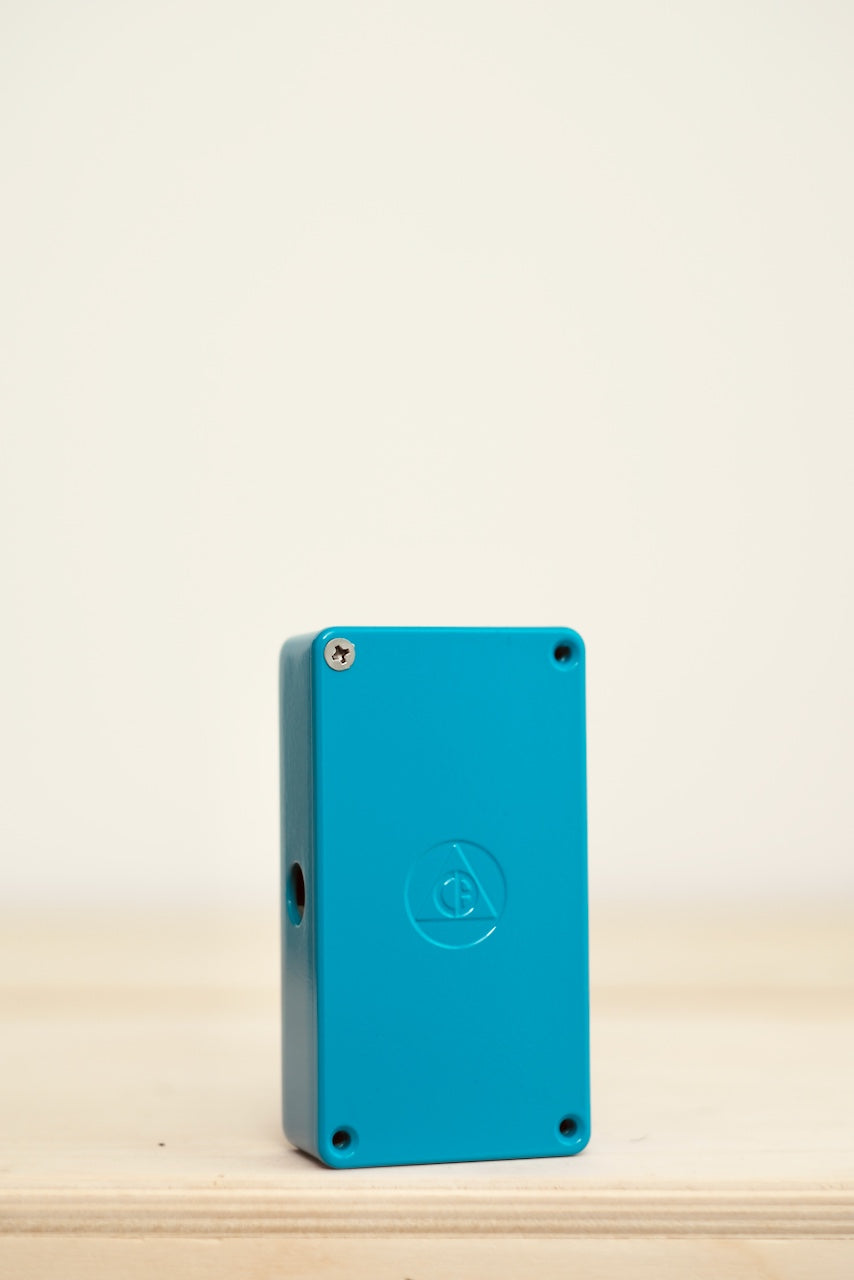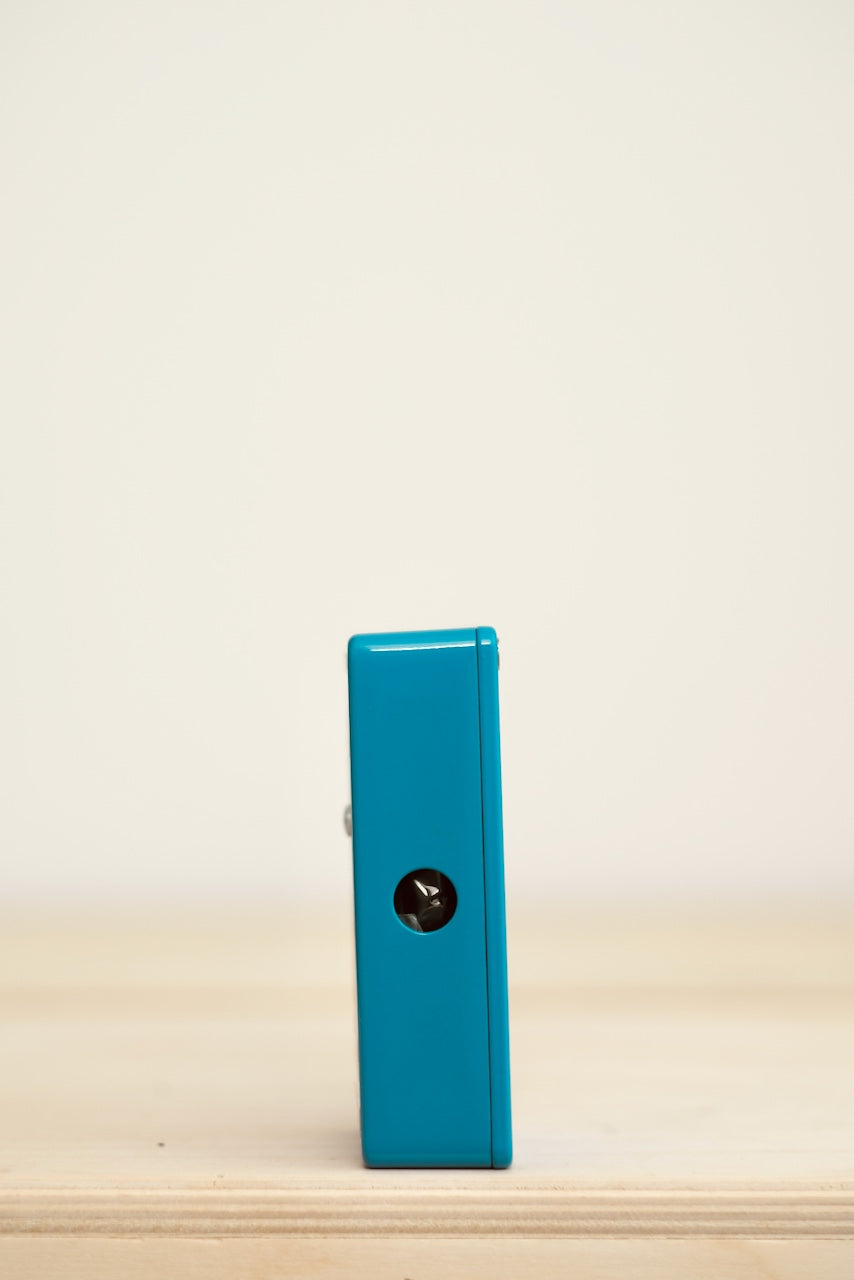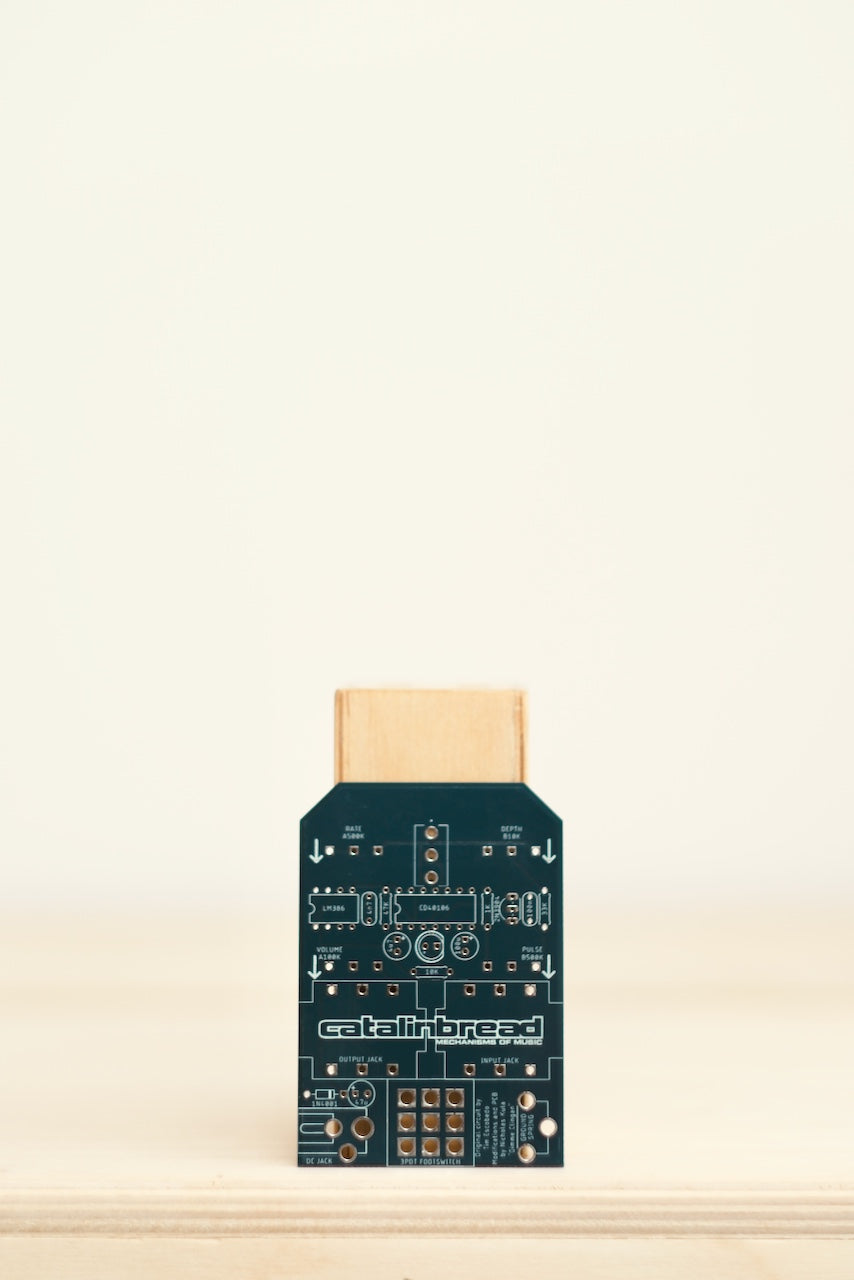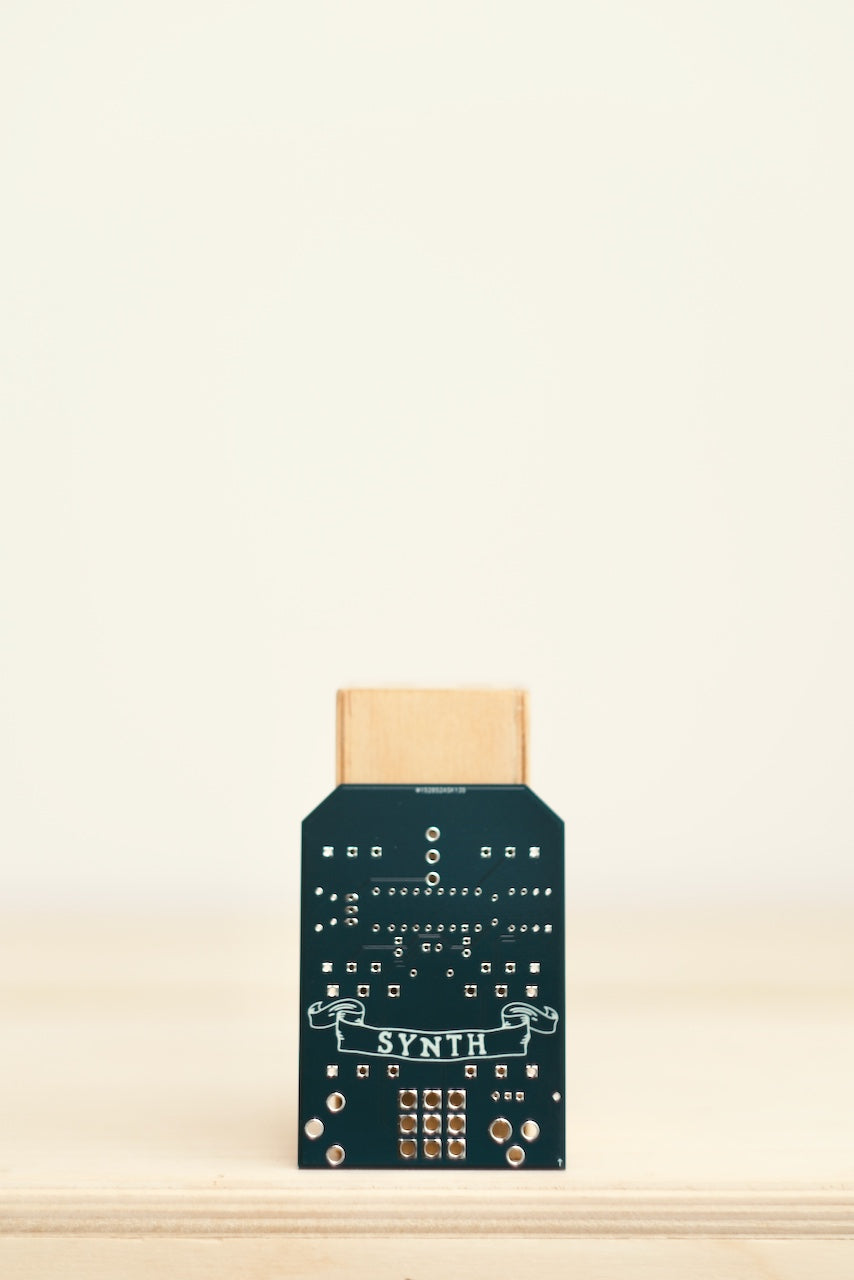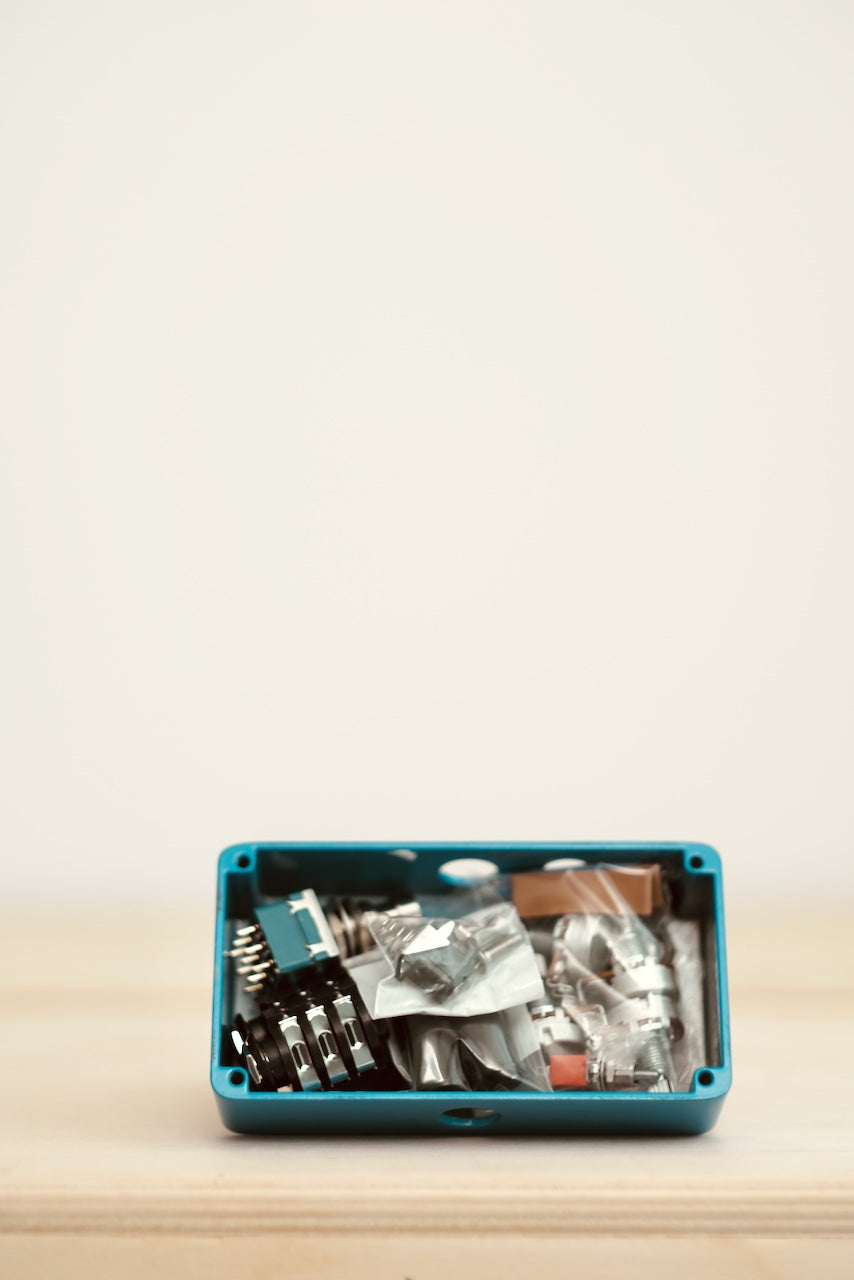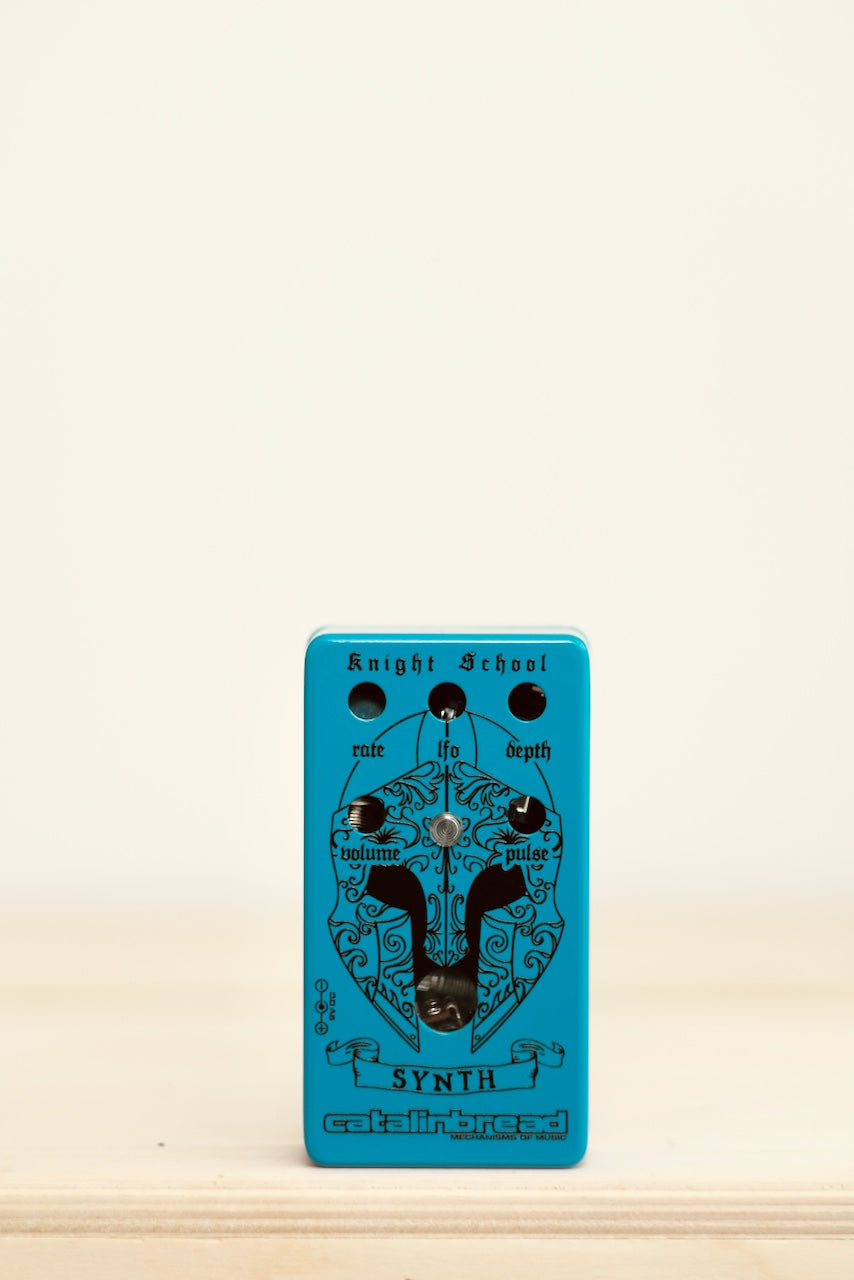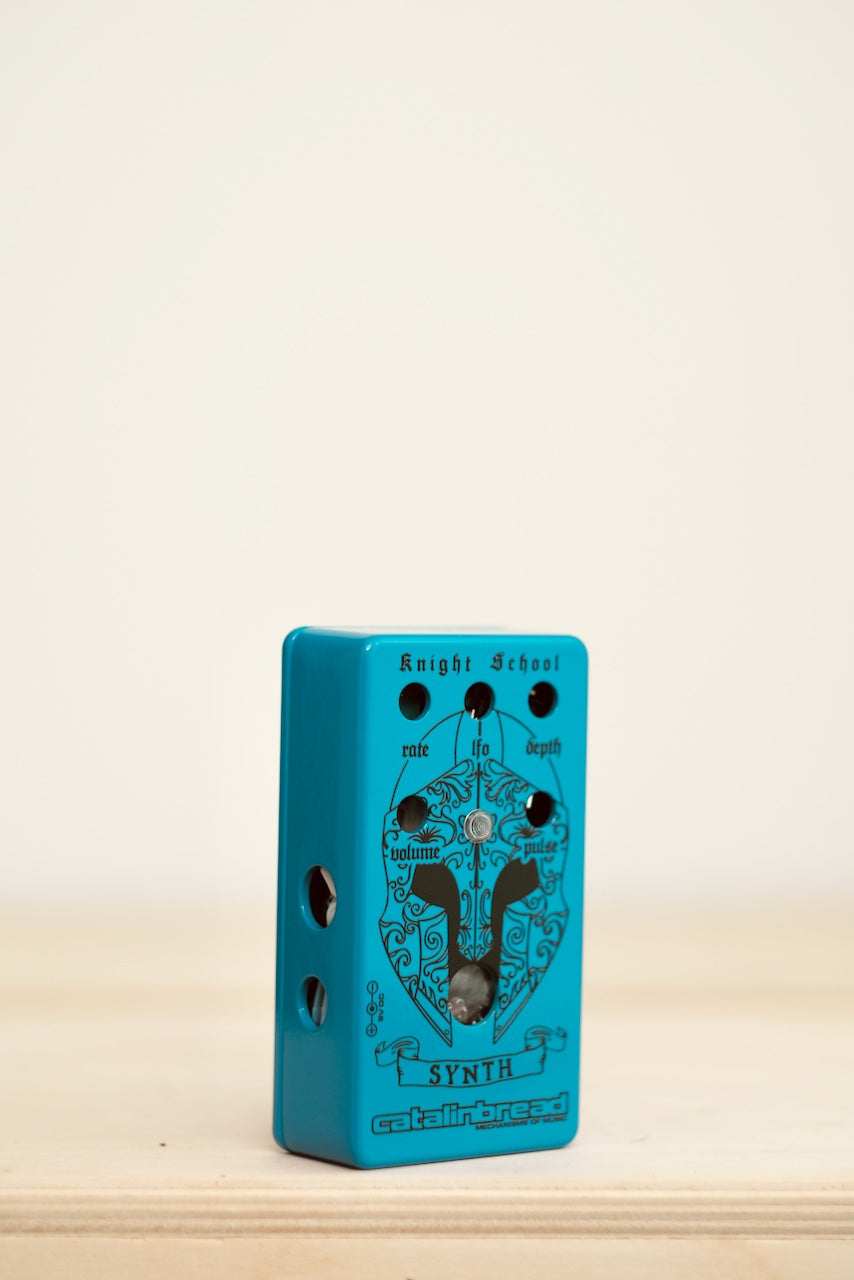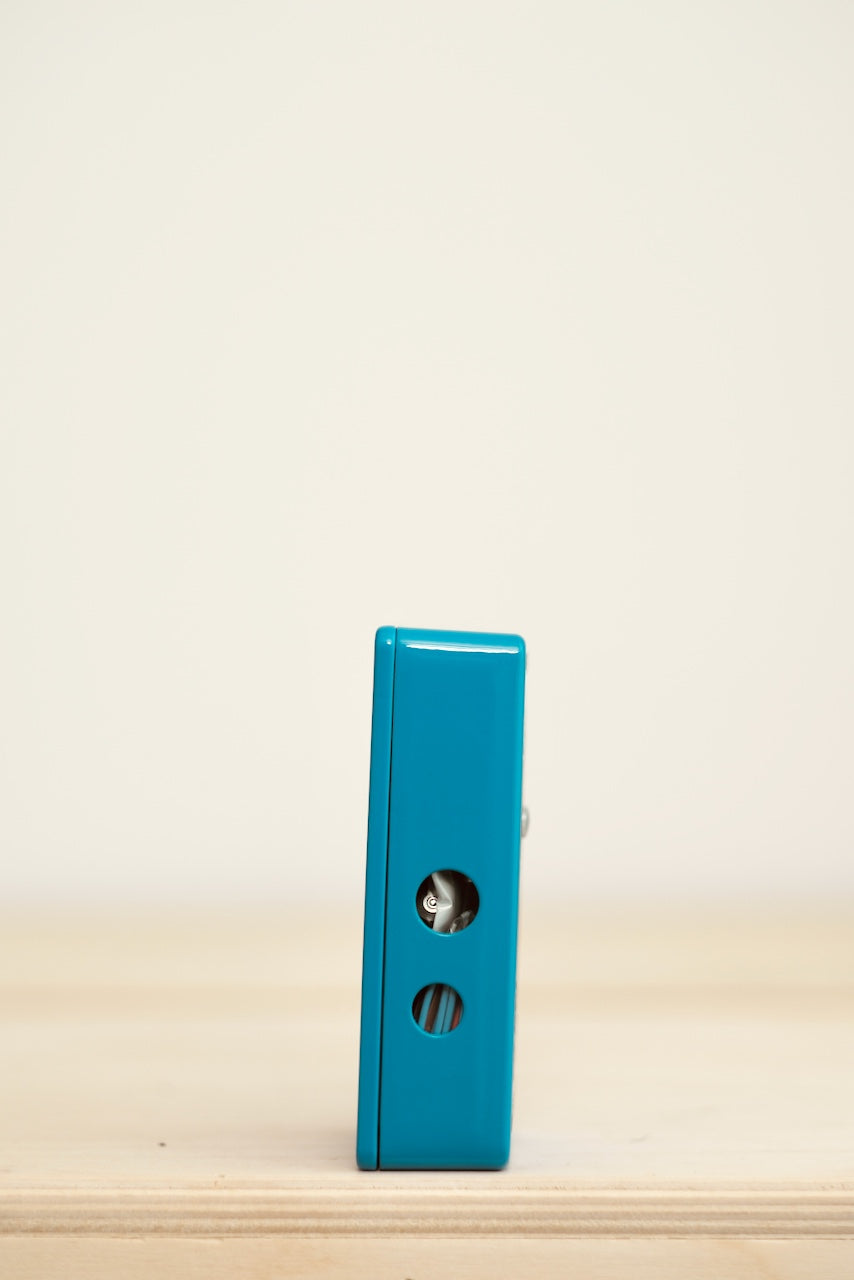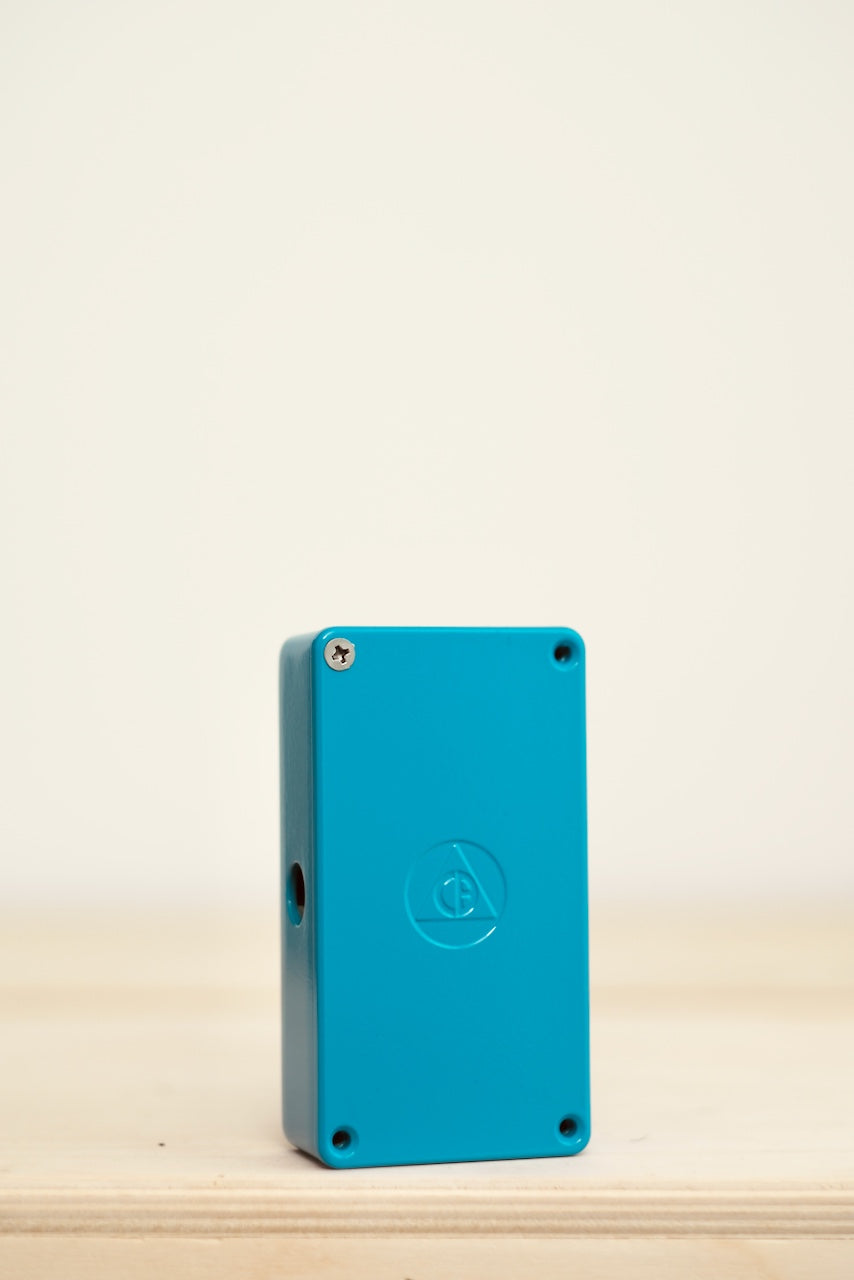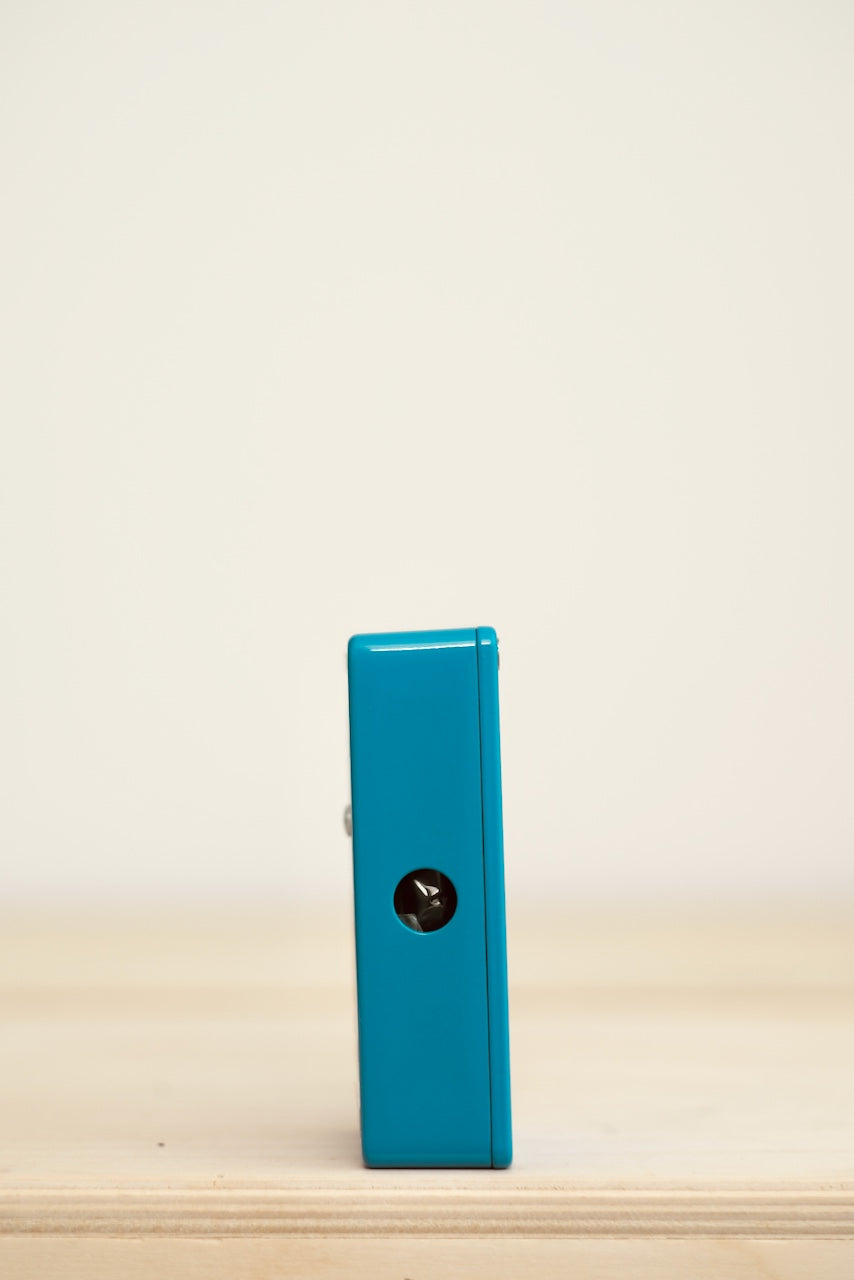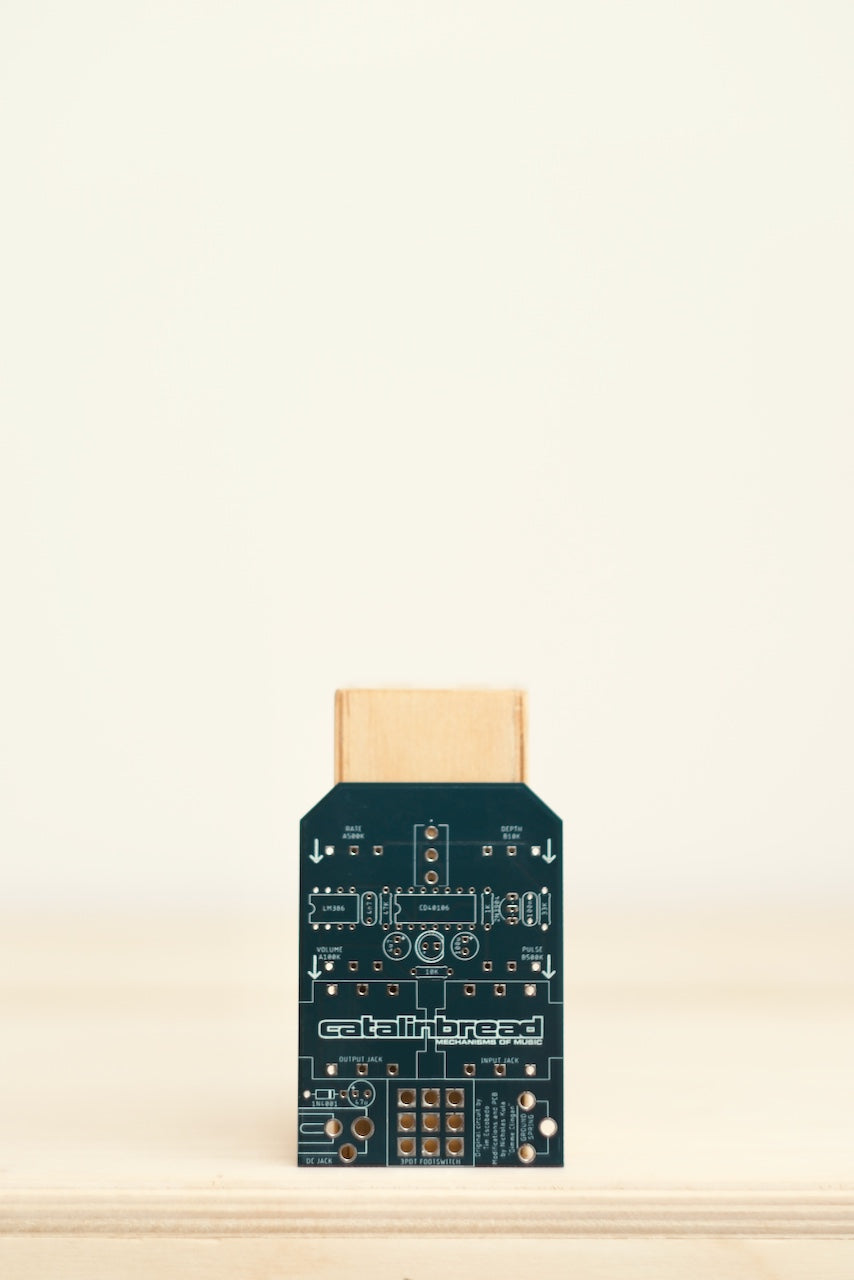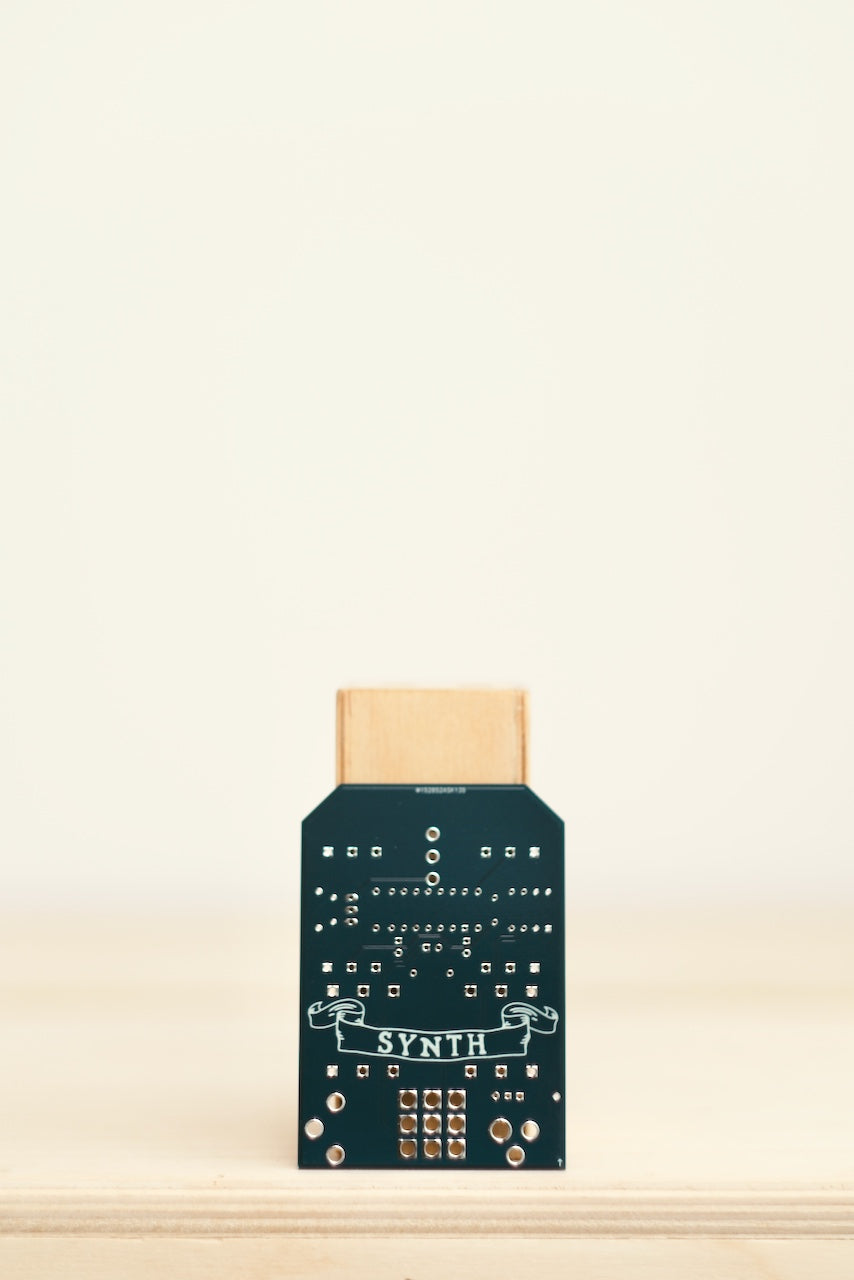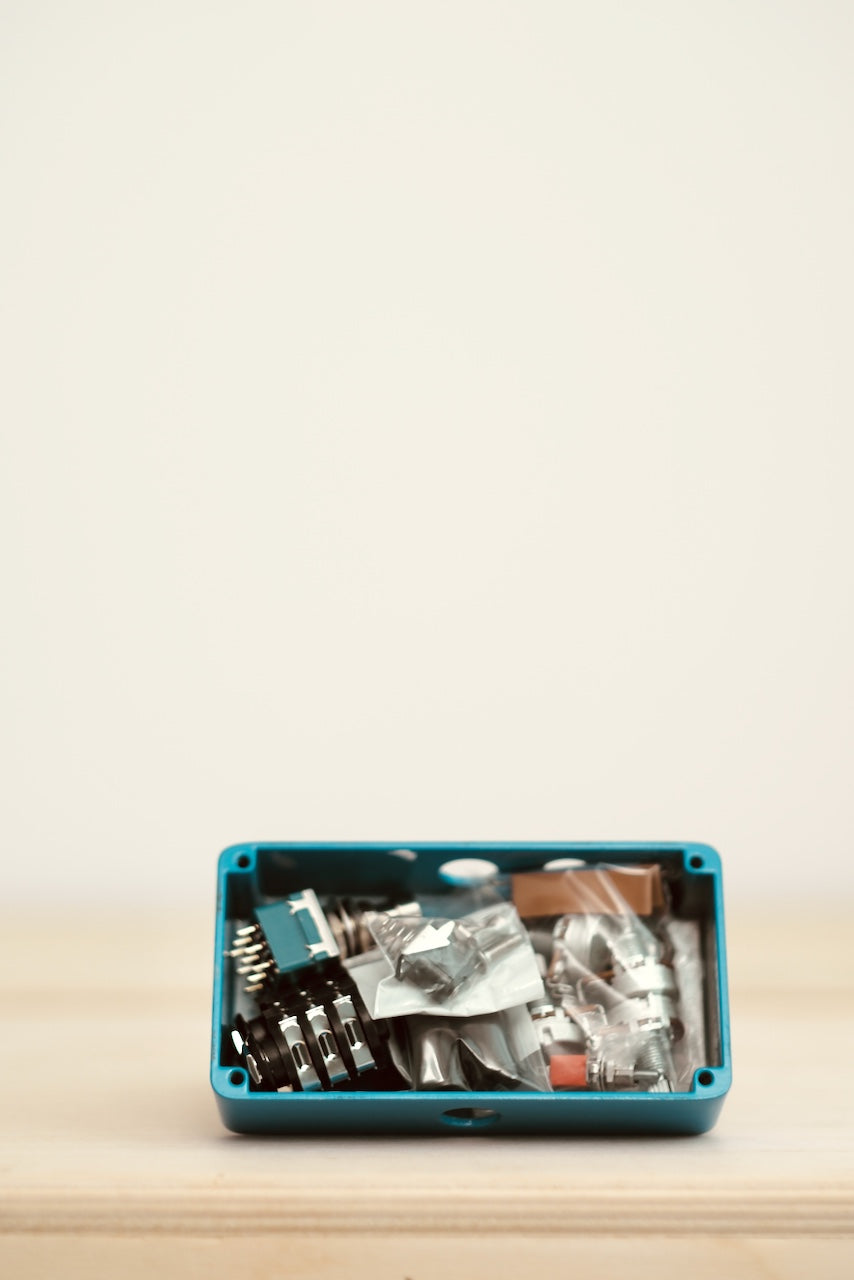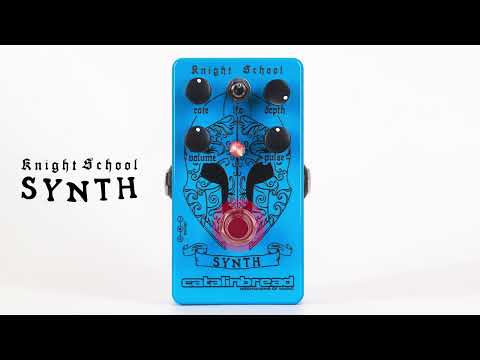Catalinbread
Catalinbread Knight School Synth
Catalinbread Knight School Synth
Brand new. Authorized dealer.
From the manufacturer:
Here’s a tale from the annals of my personal DIY history: I learned how to breadboard and read schematics right before college, and I breadboarded many designs posted on ampage.org. Shortly after that, I found a new DIY website. This one was called Beavis Audio. If you’re familiar with this, it’s for a good reason; BA was one of the premier DIY sites out there, and it refreshingly wrote everything in plain English. One of the projects there was called the “Heterodyne Peyote Space Explorer”. This introduced me to the CD40106 chip and I played around with that device for what seemed like double-digit hours when I was taking EE classes.
One thing I stumbled across was when I combined a boost circuit I was working on with the 40106. It made an oddball noise, but one I thought could be cool with some refinement. It took a lot of tinkering, but it worked much better when I put a second boost circuit in front of it. I couldn’t really explain why, but it sounded cool, and I built a couple for my friends. Some time later, I stumbled across a webpage authored by one Tim Escobedo. There’s a ton of good info on his “Circuit Snippets” page, and it still exists today. As it turns out, Mr. Escobedo discovered a form of this circuit back in 2002, and comparing his circuit analysis with mine and the Space Explorer was a real “Eureka” moment for me.
Our Knight School Synth is our most ambitious project to date. I’ve since leaned into Mr. Escobedo’s method for producing the pre-gain, as it’s simpler and uses far fewer parts than my original. Essentially, it turns your guitar signal into a square wave, and then uses the CD40106 to vary the pulse width of that square wave. There’s also a switchable LFO, which automatically varies the pulse width for you, along with a Depth control to change the intensity of the shaping. It’s a truly cool effect that emulates the monophonic synthesizers of yesteryear. Dare I say there’s not a lot on the market these days that sounds like this!
CONTROLS:
RATE: This changes the speed at which the LFO automatically varies the pulse width, from slow to raygun-fast.
LFO TOGGLE: This turns the LFO on and off. The LFO varies the pulse width at a speed and intensity that are set with the knobs directly adjacent to it. NOTE: The two knobs to the left and right of this switch do nothing unless this is turned on.
VOLUME: It does the thing!
DEPTH: This changes the intensity of the LFO. When it is turned down, the LFO softly shifts the pulse width, and when it’s all the way up, the most dramatic effect is heard.
PULSE: This control takes your square-wave guitar signal and changes the width of the “on” square wave. While this can be hard to visualize, it’s easy to see what it’s doing as you twist the knob. You can think of this control as the “flavor” or “character” of the synth. On one end, it sounds nasal and high-pitched, and on the other, it’s deep and fat. Like a “cocked-wah” effect it’s best experienced in any position well after fiddling with the knob and easing into the sound it creates.
Couldn't load pickup availability
Share
